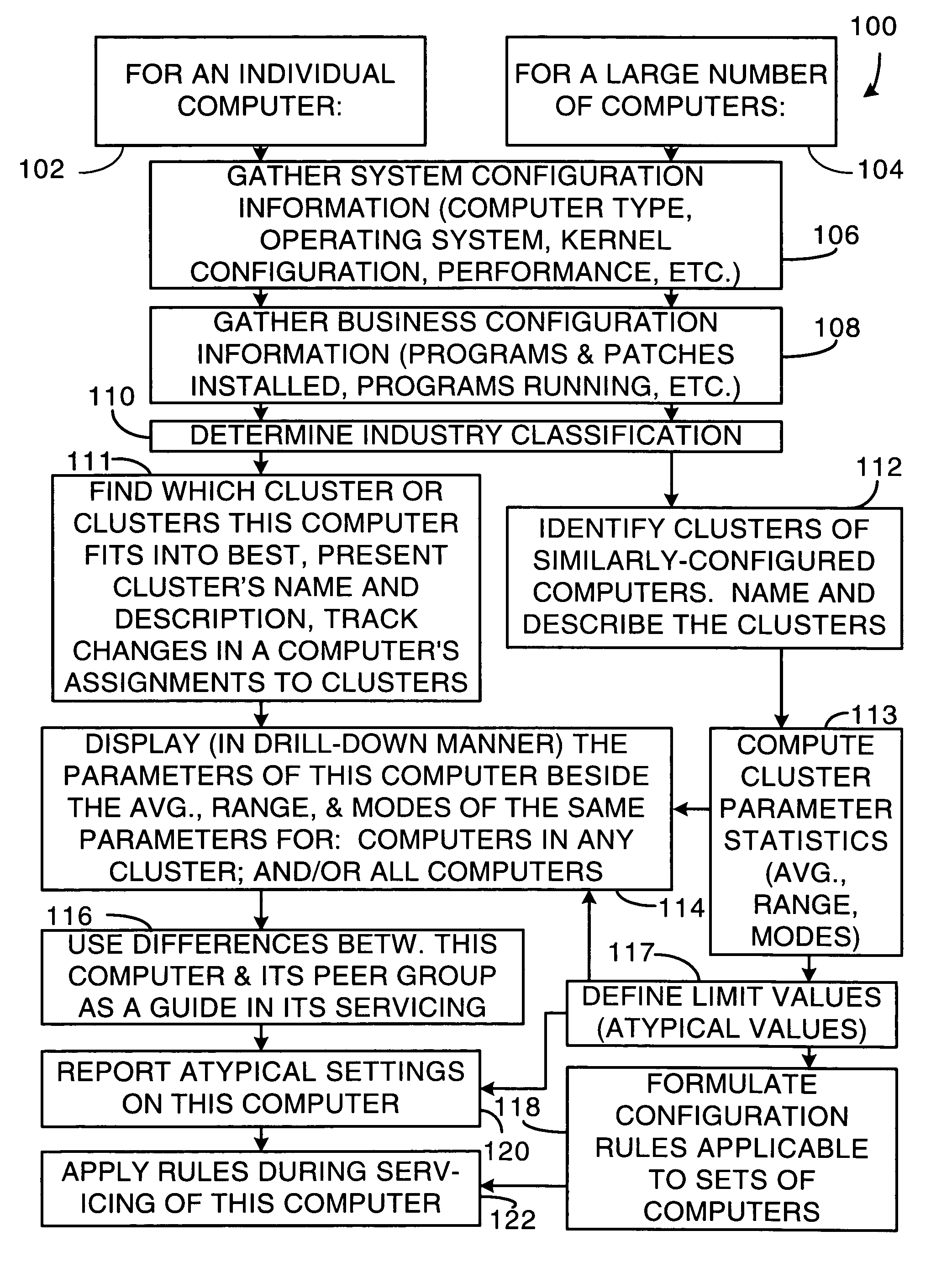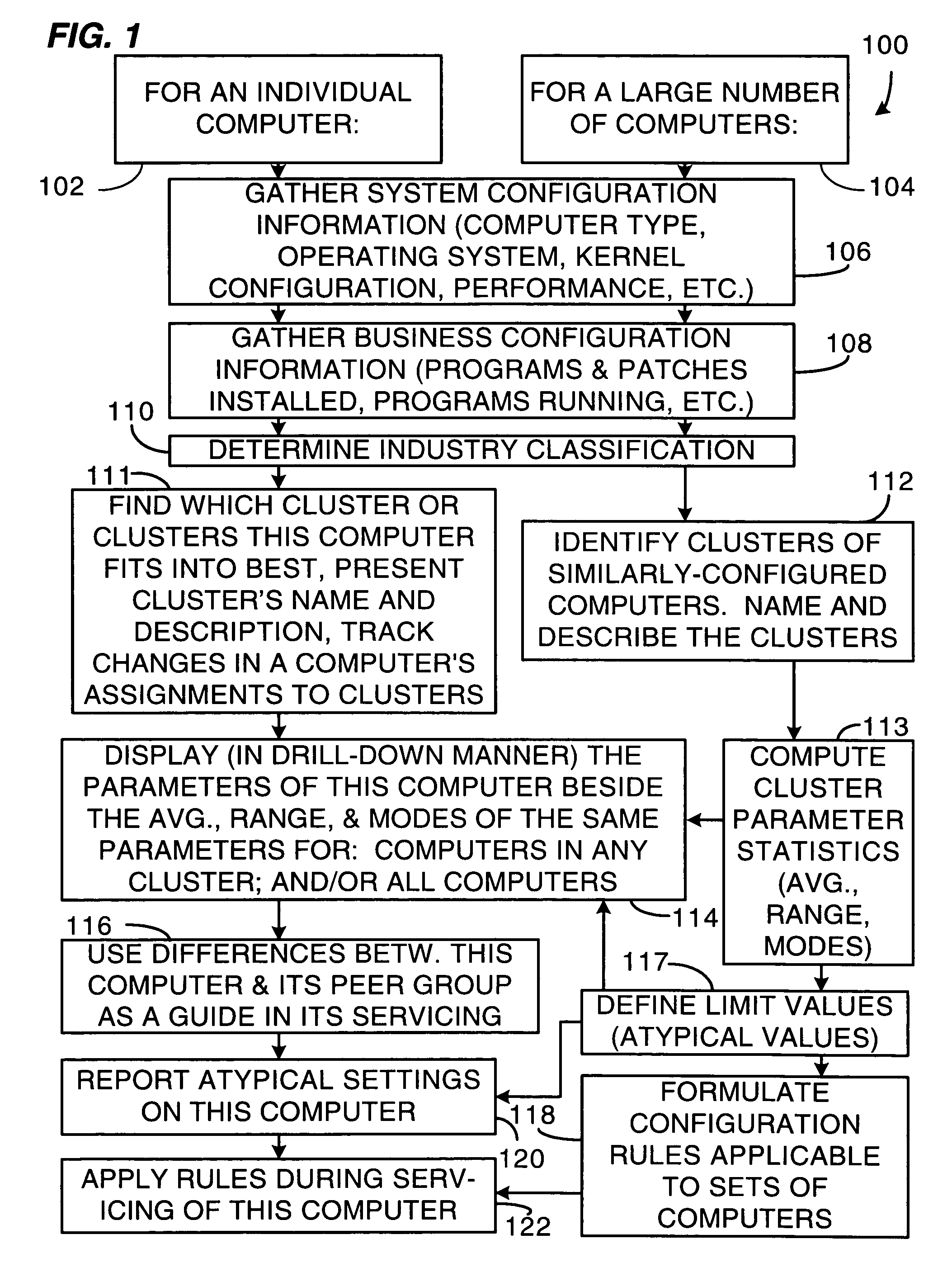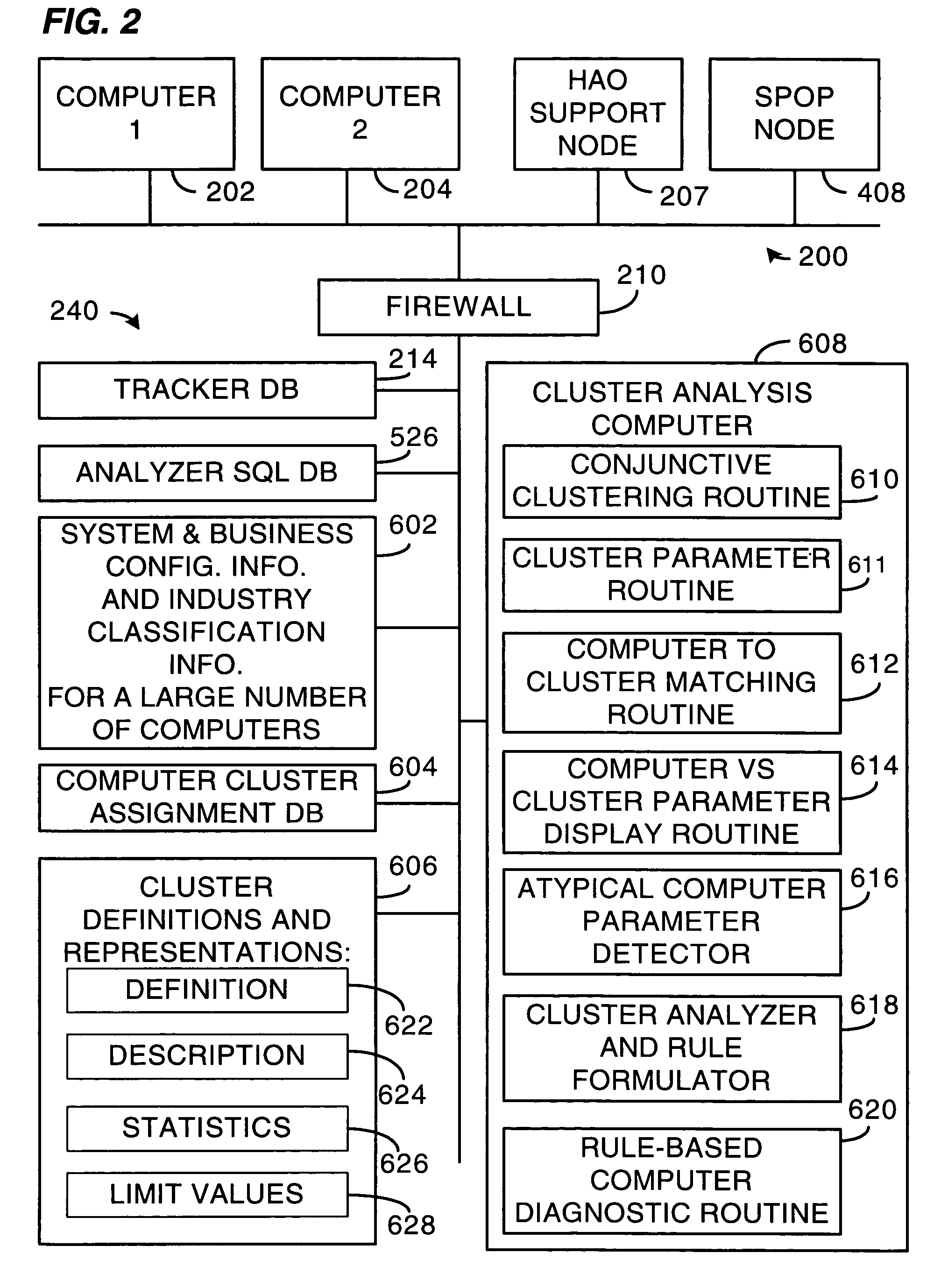Method and system for clustering computers into peer groups and comparing individual computers to their peers
a technology of peer grouping and computers, applied in the field of method and system for clustering computers into peer groups and comparing individual computers to their peers, can solve the problems of increasing complexity and the cost of the service needed to keep computers running, falling in the cost of pcs and servers, and increasing the complexity of the problem of managing the configuration and diagnosing the problems within those computers, so as to maximize the number of computers included, maximize the number of configuration information value specifications, and maximize the effect of the number of computers
- Summary
- Abstract
- Description
- Claims
- Application Information
AI Technical Summary
Benefits of technology
Problems solved by technology
Method used
Image
Examples
Embodiment Construction
[0022]The following terms used in this application shall have the respective meanings ascribed to them below unless otherwise expressly defined in this application.
[0023]ENTERPRISE. An enterprise is a collection of computers, software, and networking that normally and typically interconnects the computing environment of an entity or organization of people (for example, a corporation, or division, or site, or entity defined by the extent of a WAN or LAN).
[0024]NODE. A node is a monitored device—a particular device in an enterprise, other than information pathways, to which or from which or through which information may flow over an enterprise network. Nodes normally have a network address, and some may also have names. Examples of nodes are computers that can be monitored (servers, work stations, PCs, and other types of computers), printers, and interconnect devices that can be monitored (routers, switches, hubs, etc.). (A multi-processor may be considered a single node or multiple n...
PUM
 Login to View More
Login to View More Abstract
Description
Claims
Application Information
 Login to View More
Login to View More - R&D
- Intellectual Property
- Life Sciences
- Materials
- Tech Scout
- Unparalleled Data Quality
- Higher Quality Content
- 60% Fewer Hallucinations
Browse by: Latest US Patents, China's latest patents, Technical Efficacy Thesaurus, Application Domain, Technology Topic, Popular Technical Reports.
© 2025 PatSnap. All rights reserved.Legal|Privacy policy|Modern Slavery Act Transparency Statement|Sitemap|About US| Contact US: help@patsnap.com



